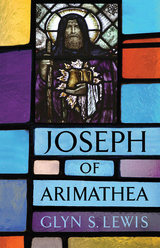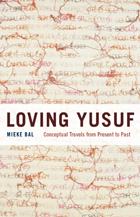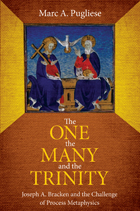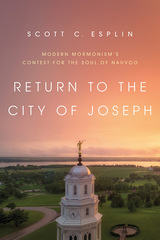5 books about Joseph

Joseph of Arimathea
Glyn S. Lewis
Westholme Publishing, 2017
Exploring the legend of the man who brought Christianity to the British Isles
“This author testifieth Joseph of Arimathea to be the first preacher of the word of God within our realms. Long after that, when Austin came from Rome, this our realm had bishops and priests there-in, as is well known to the learned of our realm.”—Elizabeth I, in a 1559 letter to Roman Catholic bishops on the precedence of the Church of England
The name Joseph of Arimathea is generally well known, either from the accounts in each of the New Testament Gospels that tell of his providing a tomb for the burial of Jesus; from his depictions in medieval and Renaissance art; from his associations with the Holy Grail that later found greater expression in medieval Arthurian stories; and even from the story that has endured in western Britain that as a trader in tin, copper, and lead, he had traveled often to the region—and with him came the Christian religion. These stories are strongly rooted, despite the lack of impeccable source material—so much so that Elizabeth I used Joseph of Arimathea as proof that the Church of England predated the Catholic church in her country. In Joseph of Arimathea Glyn S. Lewis brings these fragments together in order to provide as fully as is possible what we can infer about this first-century apostle.
The author first discusses Arimathea, a town that has yet to be positively identified. He then reviews the accounts of Joseph’s entombment of Jesus that appear in each of the four Gospels. From these earliest references, the author next consults the literary and oral tradition evidence of Joseph’s passage by ship to the south of France among a group of fugitives escaping persecution for being Christians, and his early visits to Britain as a trader in precious ores. These voyages are said to have brought him to the area around Glastonbury, which became a flourishing monastery in the Middle Ages. Whether or not Joseph of Arimathea visited Britain, his story remains an enthralling and fascinating mystery.
“This author testifieth Joseph of Arimathea to be the first preacher of the word of God within our realms. Long after that, when Austin came from Rome, this our realm had bishops and priests there-in, as is well known to the learned of our realm.”—Elizabeth I, in a 1559 letter to Roman Catholic bishops on the precedence of the Church of England
The name Joseph of Arimathea is generally well known, either from the accounts in each of the New Testament Gospels that tell of his providing a tomb for the burial of Jesus; from his depictions in medieval and Renaissance art; from his associations with the Holy Grail that later found greater expression in medieval Arthurian stories; and even from the story that has endured in western Britain that as a trader in tin, copper, and lead, he had traveled often to the region—and with him came the Christian religion. These stories are strongly rooted, despite the lack of impeccable source material—so much so that Elizabeth I used Joseph of Arimathea as proof that the Church of England predated the Catholic church in her country. In Joseph of Arimathea Glyn S. Lewis brings these fragments together in order to provide as fully as is possible what we can infer about this first-century apostle.
The author first discusses Arimathea, a town that has yet to be positively identified. He then reviews the accounts of Joseph’s entombment of Jesus that appear in each of the four Gospels. From these earliest references, the author next consults the literary and oral tradition evidence of Joseph’s passage by ship to the south of France among a group of fugitives escaping persecution for being Christians, and his early visits to Britain as a trader in precious ores. These voyages are said to have brought him to the area around Glastonbury, which became a flourishing monastery in the Middle Ages. Whether or not Joseph of Arimathea visited Britain, his story remains an enthralling and fascinating mystery.
[more]

Junius And Joseph
Presidential Politics and the Assassination of the First Mormon Prophet
Robert S. Wicks & Fred R. Foister
Utah State University Press, 2005
"Junius and Joseph examines Joseph Smith's nearly forgotten [1844] presidential bid, the events leading up to his assassination on June 27, 1844, and the tangled aftermath of the tragic incident. It... establishes that Joseph Smith's murder, rather than being the deadly outcome of a spontaneous mob uprising, was in fact a carefully planned military-style execution. It is now possible to identify many of the key individuals engaged in planning his assassination as well as those who took part in the assault on Carthage jail. And furthermore, this study presents incontrovertible evidence that the effort to remove the Mormon leader from power and influence extended well beyond Hancock County [Illinois] (and included prominent Whig politicians as well as the Democratic governor of the state), thereby transforming his death from an impulsive act by local vigilantes into a political assassination sanctioned by some of the most powerful men in Illinois. The circumstances surrounding Joseph Smith's death also serve to highlight the often unrecognized truth that a full understanding of early Mormon history can be gained only when considered in the context of events taking place in American society as a whole."
[more]

Loving Yusuf
Conceptual Travels from Present to Past
Mieke Bal
University of Chicago Press, 2008
When Mieke Bal reread the story of Joseph and Potiphar’s wife as an adult, she was struck by differences between her childhood memories of a moral tale and what she read today. In Loving Yusuf¸ Bal seeks to resolve this clash between memory and text, using the same story, in which Joseph spurns the advance of his master’s wife who then falsely accuses him of rape, as her point of departure. She juxtaposes the Genesis tale to the rather different version told in the Qur’an and the depictions of it by Rembrandt and explores how Thomas Mann’s great retelling in Joseph and His Brothers reworks these versions.
Through this inquiry she develops concepts for the analysis of texts that are both strange and overly familiar—culturally remote yet constantly retold. As she puts personal memories in dialogue with scholarly exegesis, Bal asks how all of these different versions complicate her own and others’ experience of the story, and how the different truths of these texts in their respective traditions illuminate the process of canonization.
Through this inquiry she develops concepts for the analysis of texts that are both strange and overly familiar—culturally remote yet constantly retold. As she puts personal memories in dialogue with scholarly exegesis, Bal asks how all of these different versions complicate her own and others’ experience of the story, and how the different truths of these texts in their respective traditions illuminate the process of canonization.
[more]

The One, the Many, and the Trinity
Joseph A. Bracken and the Challenge of Process Metaphysics
Marc A. Pugliese
Catholic University of America Press, 2011
The One, the Many, and the Trinity analyzes perhaps the most ambitious and robust system of process thought developed from a Roman Catholic perspective, that of Joseph A. Bracken,
[more]

Return to the City of Joseph
Modern Mormonism's Contest for the Soul of Nauvoo
Scott C. Esplin
University of Illinois Press, 2018
In the mid-twentieth century, the Church of Jesus Christ of Latter-day Saints (LDS) returned to Nauvoo, Illinois, home to the thriving religious community led by Joseph Smith before his murder in 1844. The quiet farm town became a major Mormon heritage site visited annually by tens of thousands of people. Yet Nauvoo's dramatic restoration proved fraught with conflicts. Scott C. Esplin's social history looks at how Nauvoo's different groups have sparred over heritage and historical memory. The Latter-day Saint project brought it into conflict with the Community of Christ, the Midwestern branch of Mormonism that had kept a foothold in the town and a claim on its Smith-related sites. Non-Mormon locals, meanwhile, sought to maintain the historic place of ancestors who had settled in Nauvoo after the Latter-day Saints' departure. Examining the recent and present-day struggles to define the town, Esplin probes the values of the local groups while placing Nauvoo at the center of Mormonism's attempt to carve a role for itself within the greater narrative of American history.
[more]
READERS
Browse our collection.
PUBLISHERS
See BiblioVault's publisher services.
STUDENT SERVICES
Files for college accessibility offices.
UChicago Accessibility Resources
home | accessibility | search | about | contact us
BiblioVault ® 2001 - 2024
The University of Chicago Press









